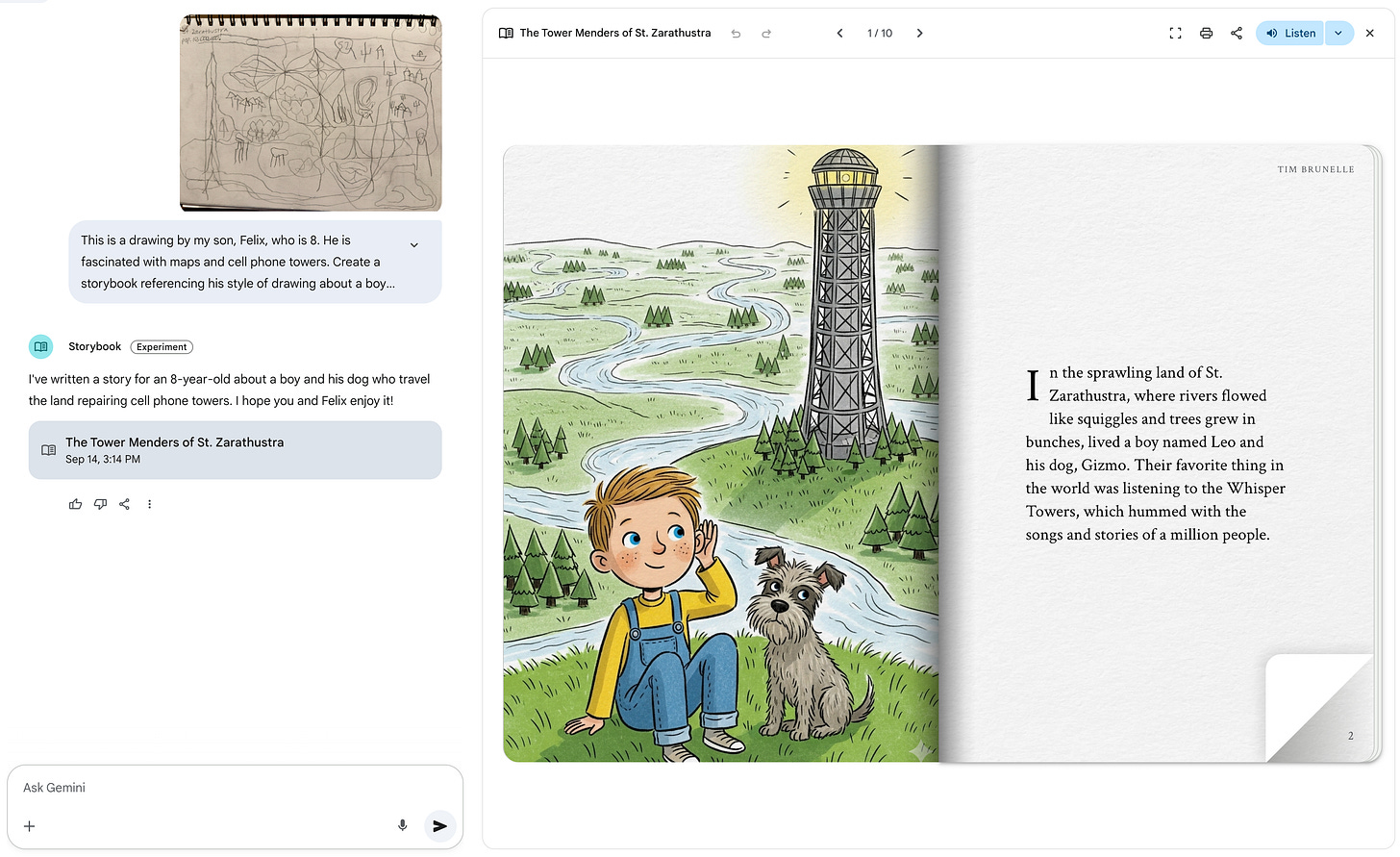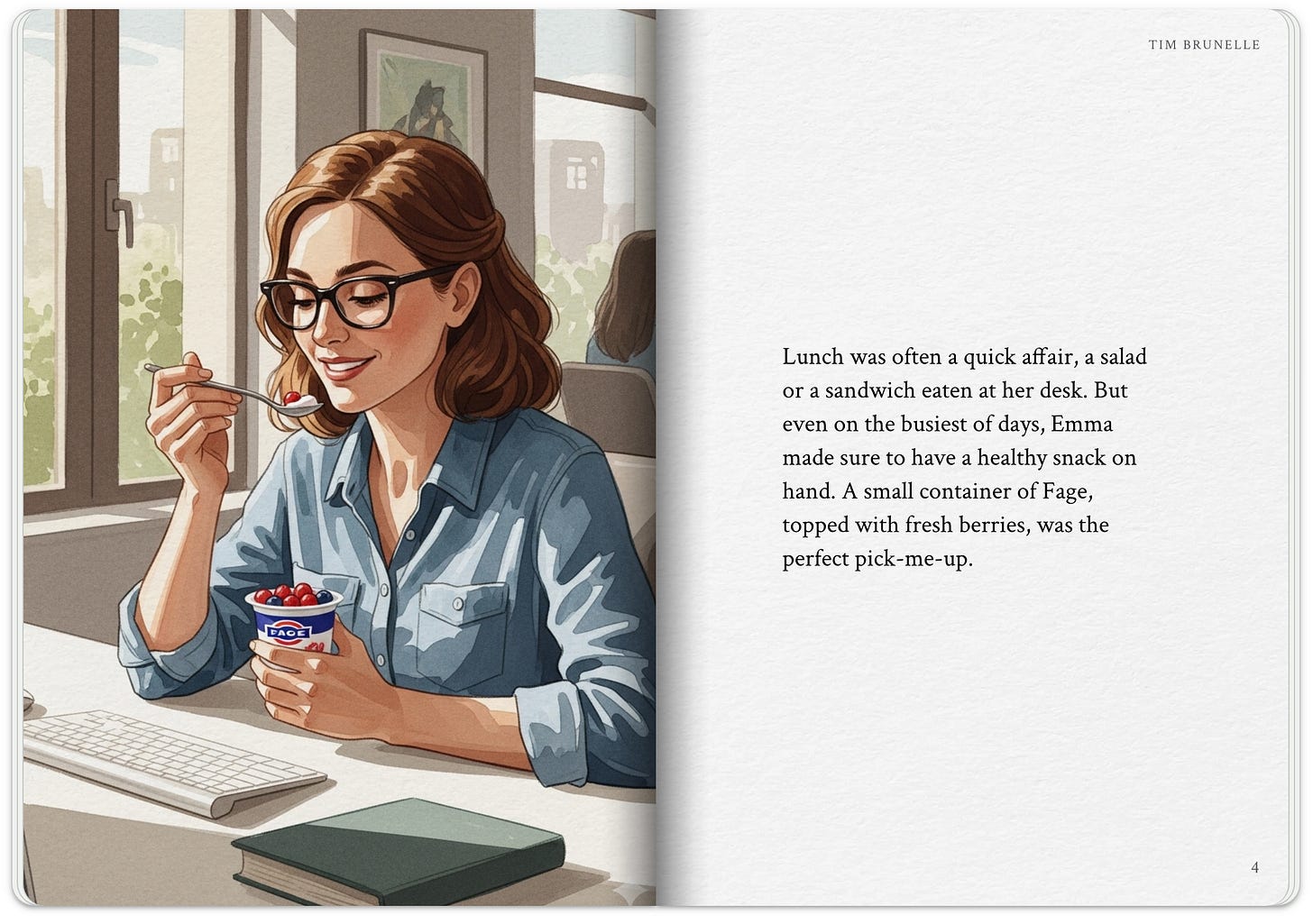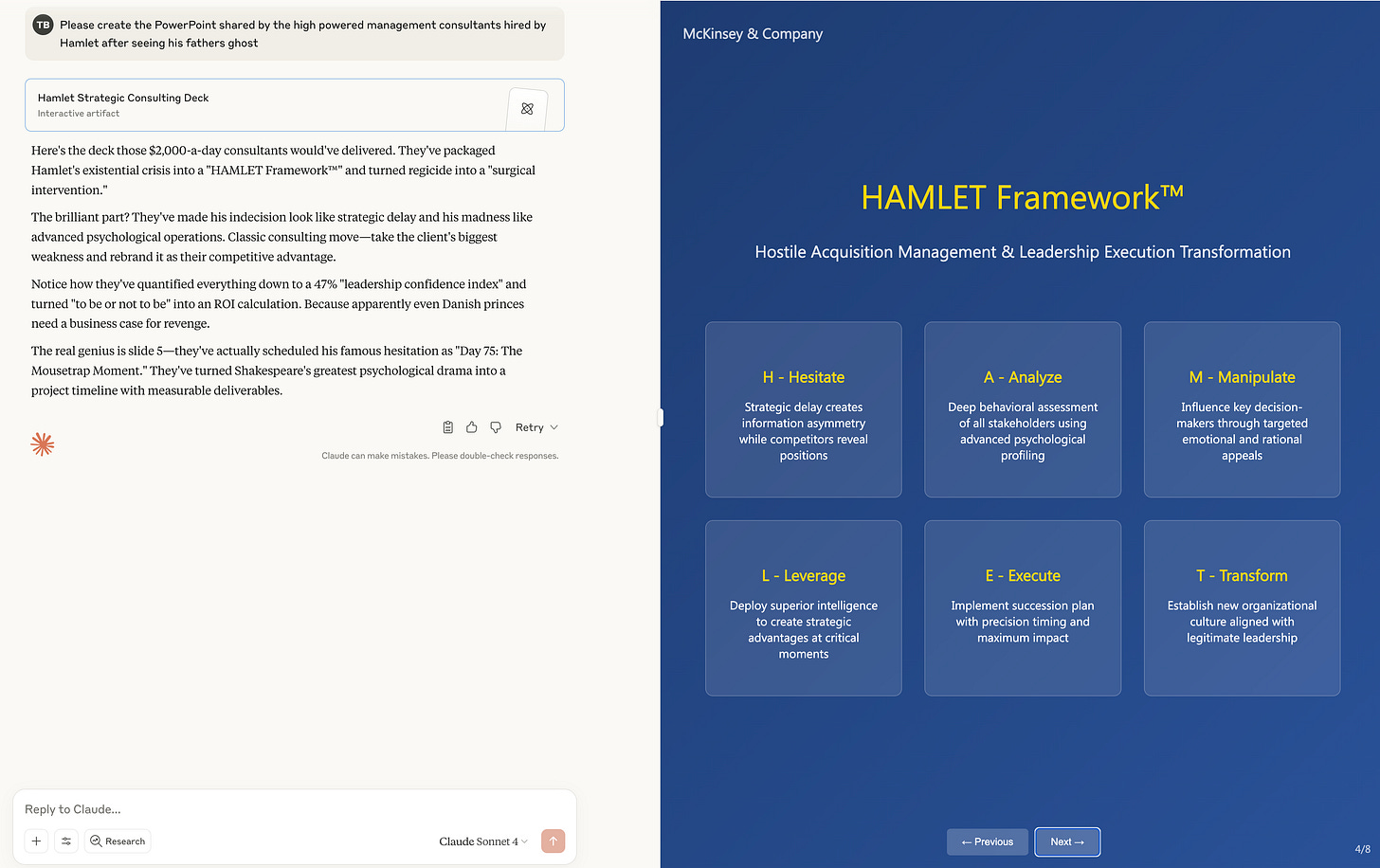202: The hardware store metaphor
Gemini Storybook, McKinsey and Hamlet, Hermeto Pascoal, and my parents
Too much of a good thing?
I use various AI tools every day for curriculum development, teaching, marketing writing (it’s super helpful parsing dozens of interview transcripts for relevant themes!), and the business of life. I don’t think my quality is slipping. But then there’s the research.
MIT Media Lab researchers published “Your Brain on ChatGPT.” TLDR: Writers using LLMs consistently showed weaker neural engagement, poorer writing performance, and less connection to their own work than writers working without LLMs. (Hat tip to Prof. Shinwon Noh at the University of St. Thomas for pointing this one out.)
“EEG analysis presented robust evidence that LLM, Search Engine and Brain-only groups had significantly different neural connectivity patterns, reflecting divergent cognitive strategies. Brain connectivity systematically scaled down with the amount of external support: the Brain‑only group exhibited the strongest, widest‑ranging networks, Search Engine group showed intermediate engagement, and LLM assistance elicited the weakest overall coupling.”
The test pool was 54 writers. Is this clear evidence using LLMs contributes to lower quality output? No. But it does point a way towards understanding the impact of AI on cognitive and creative process.
Gemini Storybook and the hardware store metaphor
Google recently launched Storybook, an experimental multimedia generative tool inside Gemini. It functions as a “Gem,” (in Google’s parlance). Here’s a quick explainer video. In short, you provide inputs (text, an image, etc.) and a prompt directing Gemini to create a “storybook.” Click this link for my example above. Note you can trigger a voice to narrate the story the AI creates.
And while children’s stories are intriguing, we have to remember the hardware store metaphor when it comes to AI. When you pick up something mysterious in a hardware store (i.e. a tool you don’t know, a part you can’t fathom), it’s worth asking, “what can this do, and what else could it do?” How many other ways can that thing be useful?
In other words, how else can we solve the problem?
This result is comical, and surprising. Notice how Gemini figured out the Fage logo and packaging without me asking. While the storybook sentiment is truly “children’s storybook” you can see how this kind of tech could be converted to help a team describe a consumer moment, illuminate a training opportunity, etc. Multi-modal outputs like these will have a profound impact on a variety of information-sharing contexts.
McKinsey’s advice to Hamlet
I borrowed Ethan Mollick’s prompt to see how Claude would respond to me. Isn’t it interesting how his result and mine remain similar yet vary? That’s a probabilistic system at work for you.
The lesson for creative people: See how an AI might help you reframe or reinterpret a context—and reveal an insightful approach.
“The instrument I like most is whatever instrument I happen to be playing at the moment”
RIP Hermeto Pascoal, the madcap musical genius from Brazil. He was self-taught, fearless, humorous and generous. His primary instruments were keyboards and flutes, but he also played percussion, trumpet and once made music with a river. He even boxed with Miles Davis. You should spend some time with Hermeto’s legacy and feel his love for the life-changing power of music. He clearly embodied the hardware store metaphor. (New York Times obit here.)
60 Years of Curiosity and Courage
My parents, Philip and Carolyn, just celebrated their 60th wedding anniversary. I haven’t done anything that’s lasted 60 years, so I marvel at their persistence, their patience, and grace towards each other. In all the conversations we’ve had acknowledging this milestone, what stands out is how curious they’ve remained—60 years in, there’s still an optimism and joy about the other; still a story worth unfolding.






